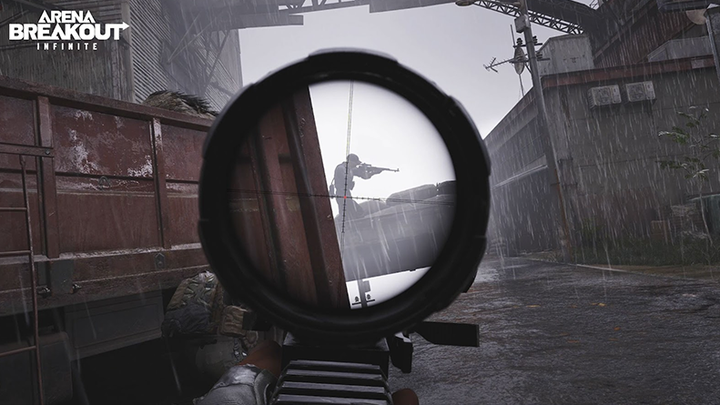Maingear Vybe Gaming PC Assessment: Big on Power, Greater on Customization
MAINGEAR VYBE GAMING PC
- Strong performance and graphics
- Easy internal access
- Plenty of customization options
- Larger than competitors
- Better cooling can get expensive
- No included peripherals
VERDICT
The Maingear Vybe is an excellent RTX gaming desktop with a ton of flexibility for customization, but is actually big and can get expensive.
The Maingear Vybe is an total beast of a gaming desktop. For $2,499 (starting at $699), you can get this machine configured with an Nvidia RTX 2080, which will take any demanding PC game above 30 frames per second in 4K. This baby offers a ton of modification options, along with easy access to the internals once you're ready to tweak the machine yourself.
Bear in mind, however, that this machine is quite large, and if you wish to spring for better cooling, it can get expensive. Despite that, the Maingear Vybe delivers big performance and modification for the price.
Maingear Vybe Pricing and Configurations
Right now there are a ton of customization options with the Maingear Vybe, but if you aren't into that, you can rely on the four preset configurations. I tested the maxed-out version, which costs $2,499 and comes with an Intel Core i9-9900K processor, an Nvidia GeForce RTX 2080 GPU with 8GB of VRAM, 16GB of RAM, a 512GB SSD, a 2TB HDD, the Epic 240 SuperCooler (closed-loop liquid cooling solution) and a 750-watt PSU.
The base model begins at just $699 and will net you an AMD Ryzen 5 2400G CPU, a Radeon Vega RX 11 GPU, 8GB of RAM and a 256GB SSD. A stage up from that is the $1,049 demonstrate, which overhauls you to an AMD Ryzen 5 2600 CPU and a GTX 1660 Ti GPU. In the mean time, the midrange Intel demonstrate (a stage down from our unit) costs $1,499 and accompanies a Core i5-9600K CPU, 16GB of RAM, a RTX 2060 GPU, a 256GB SSD and a 1TB HDD.
None of the presets have Maingear's Apex hardline tubing (an open-circle fluid cooling arrangement, presented beneath), which is one of the organization's greatest features. Pinnacle blends a tranquil siphon, weight directed cooling, stream rate detecting and a high-limit supply, which (as indicated by Maingear) enables the framework to keep running getting it done conceivable execution. It costs an additional $750 to bounce from the Epic 240 to the Apex.
What's more, our $2,499 machine didn't accompany worked in Wi-Fi or Bluetooth. It has a Wi-Fi connector, yet even the least expensive Alienware Aurora R8 ($799) accompanies Wi-Fi and Bluetooth worked in.
In case you're not kidding about redoing and have the cash to consume, you can get this machine designed for up to $19,861 (with maximized visuals). For such cash, you get an Intel Core i9-9980XE CPU, Dual RTX Titan GPUs, 128GB of RAM, a 960GB Intel Optane SSD, a 2TB SSD and three 4TB SSDs. With respect to different highlights, you get Maingear's Apex hardline tubing, extra GPU fluid cooling, an inward Elgato 4K60 Pro catch card and a 1,600-watt control supply just as installed Wireless 802.11ac and 10 Gigabit LAN.
For visual customization, you can get an adjustable lustrous completion ($599), a full-shading realistic of your hand craft on the front board ($249), a RGB LED suspension lighting pack ($39) and hued link sleeving ($99).
Design
Our Maingear Vybe has a basic however exquisite structure (obviously, the machine can be modified to your preferring). The pinnacle is totally covered in dark. Its plastic face board is home to a RGB-illuminated Maingear logo, the correct side has a removable steel board with two or three vents as an afterthought, and the left has a removable glass board joined by a chosen few ports and RGB LEDs within the machine. The lights are controlled by means of a remote that accompanies the work area.
The feet at the front and back of the machine keep it leveled off of the ground, leaving an inch of breathing space for the vents in the center. In the mean time, the highest point of the undercarriage has an attractively removable vent, which gives you access to the Epic 240 SuperCooler.
The Maingear Vybe has a basic however exquisite structure.
The Maingear Vybe is a huge machine. At 18.6 x 17.9 x 8.7 inches, it literally towers over the Alienware Aurora R8 (18.6 x 14.1 x 8.3 inches), Corsair Vengeance Gaming PC (15.7 x 10.9 x 13.8 inches) and MSI Trident X (15.6 x 15.1 x 5.1 inches).
This child has every one of the ports you need. On the left half of the machine, you get moment access to the power catch, three USB 3.0 ports, one USB Type-C port, and separate contributions for the earphone and amplifier jack. On the motherboard, there are two USB 2.0 ports, three USB 3.0 ports, one USB Type-C port, a DisplayPort, a DVI port, a VGA port, a RJ45 port, a PS/2 port and a lot of sound ports for encompass sound. The RTX 2080 GPU has three DisplayPorts, a HDMI port and a USB Type-C DisplayPort.
To get into this awful kid, you can either go from the left or right side, however you'll need to unscrew no less than two hand tightens to get. The left side gives you access to the CPU, GPU, RAM and SSD. In the event that you unscrew the correct side, you'll gain admittance to the power supply and the HDD. You'll additionally have the capacity to micromanage your links from that side.
However, I had an issue getting the right panel back on the machine, as it was really finicky about leveling out on each corner. It didn't help that the hole for the bottom screw was not properly aligned with the tower, so I had to twist it in at an angle.
Gaming, Graphics and VR
Powered by an Nvidia GeForce RTX 2080 GPU with 8GB of VRAM, the Maingear Vybe had no problem running Battlefield V in 4K on Ultra settings as I skied down the mountains of Norway and shot the first Nazi I saw straight in the face, all at 55 fps with ray tracing on.
The Maingear Vybe fell a little behind on the Shadow of the Tomb Raider benchmark (Highest, 1080p), averaging 97 fps, landing just below the 99-fps gaming desktop average. Maingear's PC beat the Aurora R8 (88 fps) and Trident X (89 fps), while the Vengeance nailed 110 fps with the same GPU. The rankings were similar when we tested the game in 4K, with the Maingear Vybe (33 fps) falling short of the category average (37 fps) and the Vengeance's score (40 fps), but still surpassing the Aurora R8 and Trident X's 30 fps.
The Maingear Vybe had no problem running Battlefield V in 4K on Ultra settings as I skied down the mountains of Norway and shot the first Nazi I saw straight in the face.
On the Hitman benchmark (Ultra, 1080p), the Maingear Vybe dominated, achieving 155 fps, properly surpassing the Aurora R8 (143 fps), the Vengeance (136 fps), the Trident X (143 fps) and the category average (117 fps). The Maingear Vybe triumphed again in 4K, nailing 85 fps and surpassing the 83-fps category average as well as the scores from the Aurora R8 (77 fps) and Trident X (78 fps).
MORE: The Best PC Games to Play Right Now
The Maingear Vybe hit 108 fps in Grand Theft Auto V (Very High, 1080p), skidding past the 101-fps average for gaming desktops. The Aurora R8 (97 fps), the Vengeance (101 fps) and the Trident X (105 fps) just couldn't keep up. At 4K, however, the Maingear Vybe (35 fps) fell short of the category average (39 fps), even though it kept pace with the Trident X (35 fps), Aurora R8 (34 fps) and Vengeance (33 fps).
Of course, the Maingear Vybe, Aurora R8, Vengeance and Trident X all crushed the SteamVR Performance Test, scoring a perfect 11 to surpass the 10.2 category average.
Overall Performance
The Maingear Vybe barreled through 40 Google Chrome tabs and five 1080p YouTube videos while Battlefield V was running in the background, thanks to the machine's Intel Core i9-9900K processor with 16GB of RAM.
On the Geekbench 4 overall-performance test, the Maingear Vybe scored a wild 31,730, flying by the 25,002 average for gaming desktops. This machine made short work of the Vengeance's Core i7-8700 CPU (24,600) and just slid past the Trident X's Core i9-9900K (31,581).
On our HandBrake benchmark, the Maingear Vybe took just 5 minutes and 47 seconds to transcode a 4K video to 1080p, making this a faster machine for video editing than the average gaming desktop (6:36) and the Aurora R8 (7:14). However, the Trident X completed this task slightly faster, coming in at 5:38.
Maingear's 512GB SSD copied 4.97GB of data in just 11 seconds, which translates to 463 megabytes per second and doesn't quite make the category average (480 MBps). The Vengeance's 480GB SSD (424 MBps) and the Trident X's 512GB SSD (424 MBps) are roughly on a par with the Vybe, while the Aurora R8's 512GB SSD excelled, at 636MBps.
Bottom Line
The Maingear Vybe ($2,499) is a great gaming desktop if you prioritize power and want the freedom of either customizing your desktop in the shop or even by yourself. That said, the machine itself is quite large compared to its competitors, and it doesn't include any peripherals. Plus, Maingear's top-of-the-line Apex hardline tubing can put you in the deep end.
If you're looking for a more compact machine, consider getting the MSI Trident X ($2,499), which offers a sleek and sexy design with similarly powerful components, as well as included peripherals.
But overall, the Maingear Vybe is a great customizable machine that can take you to the land of 4K gaming — and look good doing it.






















